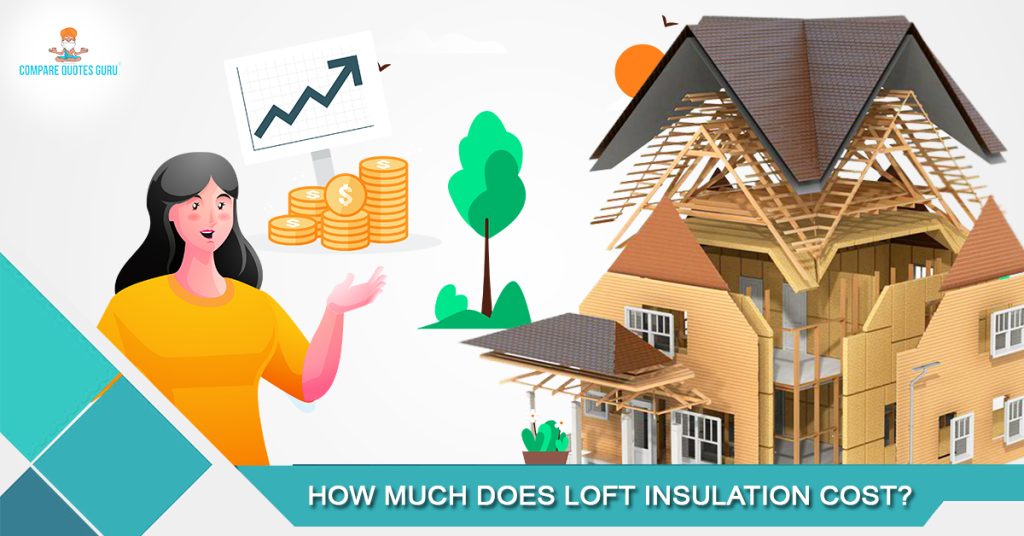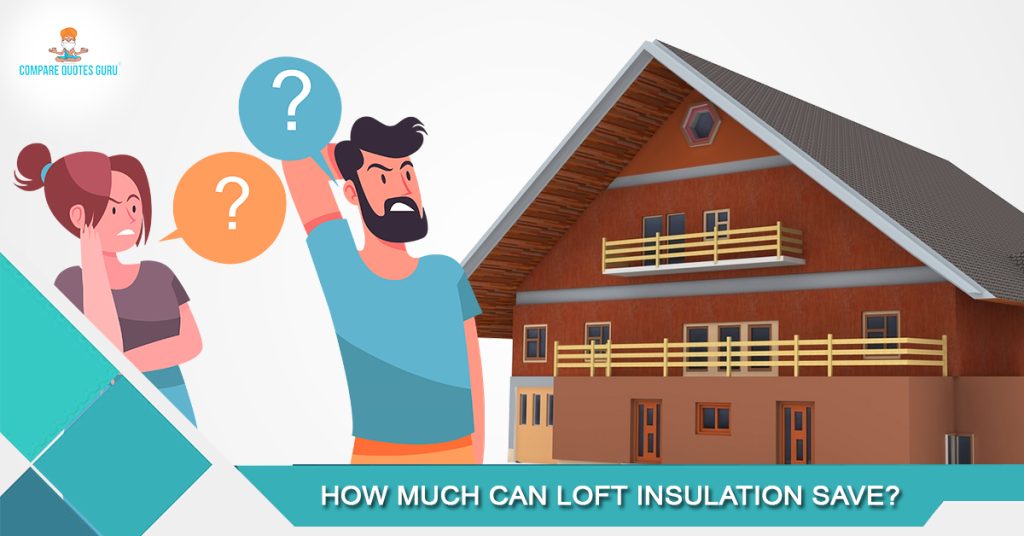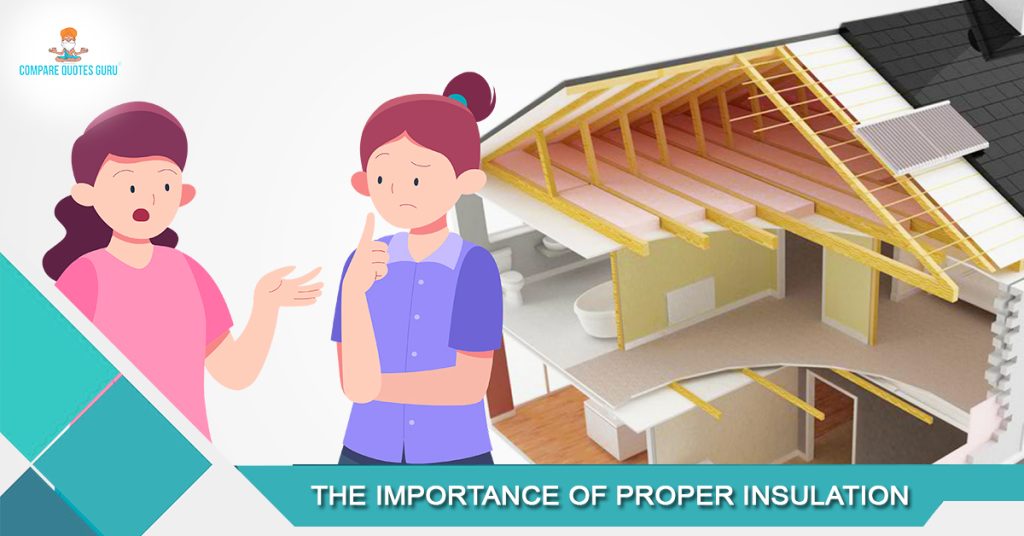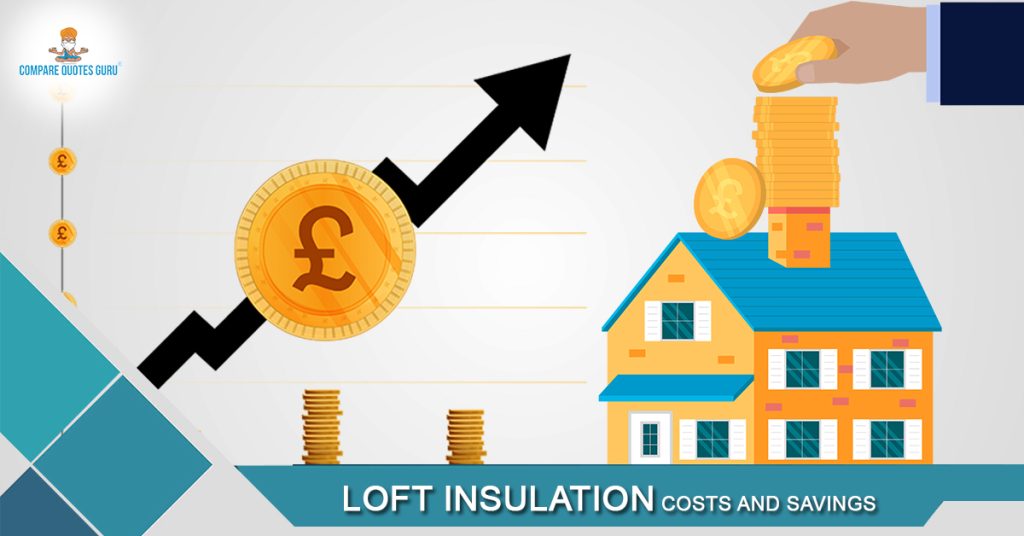Each material and composition of loft insulation has its own set of advantages, ranging from classic glass wool to green, renewable wood fiber insulation. A well-insulated and functional loft is a fantastic addition to any home. But, exactly, what does loft insulation imply? Loft insulation, to put it simply, is like a wooly hat for your home. Keeping warm air inside so you don’t have to use as much power to heat it
The most prevalent type of household loft insulation is loft roll. Because it is simple to install, loft roll is regarded as a beneficial household loft insulation product. You can insulate the ceilings of your loft by just laying out the insulation all across the floor. Due to its ease of installation, it’s ideal for bare joists and other easily accessible areas. Loft insulation is a simple and cost-effective house modification. You’ve arrived at the right site at compare quotes guru if you are interested in learning more about its advantages.
The loft in most homes is an empty space that will usually only be used for storage. It can be hard to make a room out of a space like this, and many homeowners don’t want to expand their home in this way. But this does not mean that your loft can’t serve a purpose greater than simply being used to keep items safe.
As much as 25% of the heat produced by your boiler can leave your home through the roof. This is money being wasted, and this is something that most people want to avoid when they are trying to keep up with the costs of running their home. So how exactly are you supposed to use your loft to solve this problem?
Loft insulation is the answer to this challenge, giving you the chance to trap the heat that you generate without having to spend a fortune in the process. Insulation like this can save a small fortune, but how much does it cost and how much can you save when you are using this type of solution to improve your home?

How Much Does Loft Insulation Cost?
Loft insulation should be minimum 270mm thick, which can be handled with an array of substances. Loft insulation is typically packed in a roll that can be simply placed out between and over the joists. It can be composed of fiberglass, mineral wool, sheep’s wool, cellulose, and other materials.
Hiring an experienced insulation specialist, on the other hand, is the ideal method to ensure decent work and take care of all the complications that come with it.
When you factor in the cost of the materials and the time it takes to complete the job, the average cost of insulating a loft with simple blanket insulation is between £300 and £400, determined by the size of the loft.
Loose-fill insulation, which employs a substance like cork comparable to those used in blanket insulation and may be placed between joists, seems to be another way for insulating a loft. Spray foam or blown-foam insulation is a good option to simple rolls of loose-fill insulation for loft insulation, in which a layer of foam is sprayed from specific equipment over the space to be insulated.
What is the loft insulation cost per m2 in the UK?
The estimated price of loft insulation is £5 to £11 per sq meter. This indicates that insulating a four-bedroom detached house should require no more than £1250. One significant benefit is that it aids in the reduction of your energy bills. Some customers save as much as £215 every year on their energy expenses using it.
Hence, this requires the services of a professional, although it is helpful in regions where access is limited and is simple to install.
The Labor Costs
Unless you plan to install your insulation yourself, it’s likely that you’re going to need to spend money on labor to have your loft insulated properly. You can attempt to install this type of product by yourself, though this can result in mistakes being made that will cost more than you save in the first place, and this makes it well worth looking for professional help.
The cost of the labor for your loft space insulation will depend on a variety of different factors. The size of your home and the amount of insulation you are installing will be a big factor, but the type of insulation you choose will also go into this consideration. This can be a lot more for homes that are exceptionally large, though.
The Material Costs
The materials that are used for your loft insulation project are likely to make up the largest costs you must cover. Given how much can be saved when you go down this route, this can make the money you have to spend well worth it. Of course, though, you will need to choose insulation that is able to meet your budget.
– Blanket Insulation: Blanket insulation is the most common variety of this type of product found on the modern market. This type of material is affordable compared to things like floor tiles and carpets. You can spend on this type of insulation, but it will be worth reading reviews to make sure that you will get something better for your money. This type of insulation typically is not able to provide sufficient insulation and may require regular maintenance.
– Loose-Fill Insulation: Loose-fill insulation is easy and fast to install, and it is made from loosely packed materials like cellulose. Many people choose this type of insulation because it is quick and easy to install, but this also means that it tends to blow around or move in lofts with a lot of air circulation.
– Fibreglass Loft Insulation: This is one of the most common type of insulation you will find for homes. But it also with most number of flaws which includes low insulation value, not able to cover every gap in your loft space, sagging overtime.
– Spray Insulation: Spray insulation uk cost can be a little expensive loft insulation method available to homeowners as compared to others, though it can also be the best choice as it provides high insulation value, fills all the gaps in the loft area, helps in reducing air borne noises and can be 100% water blown product.
As you can see, the materials that go into your loft insulation project requires careful selection. Thankfully, projects this simple tend to be relatively affordable, and the savings that your insulation can bring will make the whole thing well worth it.
How Much Can Loft Insulation Save?

Loft insulation has the potential to save you a lot of money in the modern world. While many homes are built without this vital resource, you can easily have it added to benefit from the cost-savings that others get to enjoy. But how much can loft insulation save you? Let us take a look at some of the money that will be saved when you go down this route.
The Bills
Most of your loft insulation cost savings will come from the bills that you have to pay each month. As mentioned previously, as much as 25% of the heat produced by your boiler can leave your home through the roof. This is a lot of wasted money, but you can save most of this when you have insulation installed.
On average, homeowners in the UK can save as much as £215 per year on their energy bills when they decide to install insulation in their home. Considering the low cost of having insulation installed in the first place, this means that this sort of home improvement could easily pay for itself within a few short years. Older homes will typically save more through this, and those in smaller homes will see less of a difference than those in larger ones.
Boiler Repairs
Boilers are responsible for heating the water throughout your home, and this also means that they make the radiators you use nice and hot. Insulation can reduce the work that your boiler must do, making it less likely to need repairs and maintenance down the line. This could save you a small fortune over the course of a few short decades, especially if you have recently installed a new boiler and want to keep it in good shape.
Advantages of Loft Insulation
Let’s look at the advantages of having loft insulation in your home now that we’ve split down the process. There is plethora of advantages of loft insulation you could ever imagine.
Heat Loss Mitigation
Non-insulated homes lose a fourth of their heat through the roof. The goal of loft insulation is to reduce heat loss by forming a thermal shield heat from accumulating and escaping through your roof. You might anticipate a 25% reduction in heat loss by installing loft insulation. Your property will be warm in the cool weather in the summer as a result of this.
Bill Savings Abruptly
On a regular basis, loft insulation might save you up to £110 per year. This has a direct bearing on your energy bills. Loft insulation has life expectancy of over 40 years. Furthermore, bear in mind that you may be entitled for a government subsidy that can considerably lower the cost of loft insulation, and in some circumstances will pay the full project cost.
Noise Remediation
House insulation can lessen the amount of noise that enters your home and provide some comfort from noise pollution. You should notice a reduction in outside noise once your loft has been appropriately insulated, particularly on the upper floor of your building.
Effect on the Value of Your Home
A better score for your apartment’s Energy Performance Certificate is an obvious benefit of your loft’s insulation. As it exists, a better rating will help enhance the price and resale value of your home.
Condensation mitigation
You will be capable of removing the majority of condensation-related issues. While some people believe condensation is one of the shortcomings of loft insulation uk, with the right insulation material, condensation may be greatly reduced
Disadvantages of Loft Insulation
Cons of loft insulation are comparatively less as pros
Problems with Air Exchange
Heat energy also travels by immediate air exchange, such as air infiltration through a ceiling into a loft, in addition to transmission directly through ceilings. Other insulation types, such as loose-fill cellulose or sprayed foam, are thicker and provide better air leak prevention than loft insulation. Air easily travels through the loft because of its low density. When putting loft insulation you must take time and care ahead of time to locate and seal air leaks from the living rooms below, before the insulation covers them permanently.
Moisture Hazards
Moisture is highly damaging due to loft insulation. Loft insulation, unlike foam board or sprayed foam insulation, loses all R-value and has essentially no insulating characteristics until it dries. Moisture can contaminate loft insulation owing to recurrent roof leaks or simple condensation, which occurs when moist warm air from living rooms below pools in the roof and compresses when temperature falls at night, soaking the insulation.
Mold Obstacles
Mold formation is common when moisture is available in loft insulation. Because cellulose does not permit for the free movement of air that transfers mold spores and provides moisture, this is more common in loft than in alternatives such as loose-fill cellulose. Mold spores in the air that settle in the loft insulation grow when subjected to dampness from condensation. Mold can cause havoc on indoor environmental quality and trigger allergy reactions in those who are allergic to it.
The Importance of Proper Insulation

Saving money on your bills is a good enough reason for many people to insulate the property they call home. Of course, though, this type of home improvement goes further than this, and it is well worth considering the impact that loft insulation could have on your home and the world around you. There are loads of reasons to consider the idea of loft insulation that doesn’t relate directly to the money you will save.
The Environment
According to Money Supermarket, installing insulation in a semi-detached home can save as much as 990 kg of CO2 from being released into the atmosphere each year. That is about the same as a return flight from London to New York, and this shows just how important insulation can be. If each home was insulated to the same degree, the amount of carbon dioxide created by humans would be drastically lowered.
House Value
For many people in the modern world, having insulation is not considered a choice; it will be an essential aspect of their home. This means that it can be harder to sell homes that do not have insulation already installed. Getting insulation can make your house more valuable, while also enabling you to sell it quicker, making it easy to save and even make money when you decide to have insulation installed.
A Warmer Home
No matter the size or shape of your home, insulation has the power to make it warmer during the cold months each year. Your boiler will not have to work very hard to meet the temperature you set on your thermostat, and this means that your home is likely to be much warmer without any effort from you. This is an excellent way to improve the comfort in your home while saving money in the process.
With all of this in mind, you should be feeling ready to look at insulation for your home. This process can be well worth it, saving you money while also increasing the value of your home. You just need to make sure that you choose the right type of insulation for you.
Complete Guide To Loft Insulation 2022: www.comparequotesguru.co.uk/loft-insulation-guide-2022/

